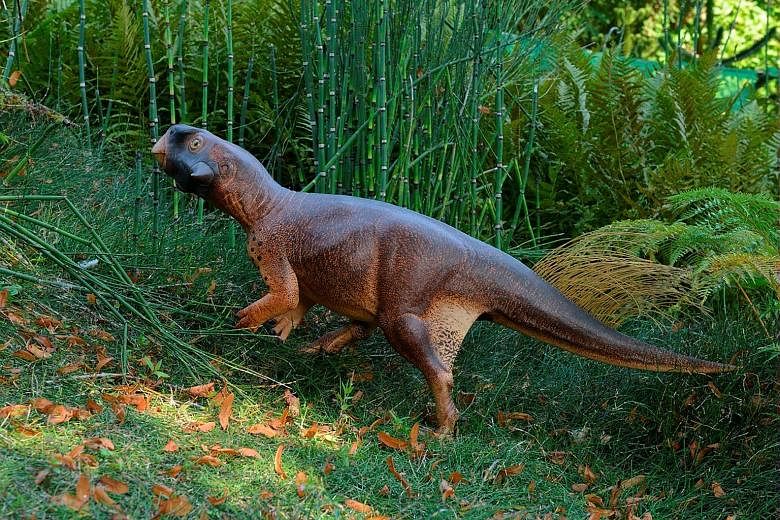WASHINGTON • Scientists guided by small structures preserved in fossilised skin have deciphered the colour and camouflage pattern of a little dinosaur with a parrot-like beak and bristles on its tail that roamed thick forests in China about 120 million years ago.
Mainly brown, Psittacosaurus (pronounced sit-TAK-ah-sawr-us) had a paler underside on the tail and belly - a pattern called countershading that might have helped the 1.5m-tall bipedal plant-eater go unnoticed by hungry predators, the scientists said on Thursday.
It also had a heavily pigmented face, and hind legs that were striped on the inside and reticulated and spotted on the outside.
The colour pattern suggests that Psittacosaurus lived in a forest environment with diffuse light filtered through a dense canopy of trees, said the researchers.
Based on their findings, they created a life-sized, three-dimensional model in full colour.
"Our model suggests it was super, super cute. I think they would have made fantastic pets. They look a bit like ET," said molecular paleobiologist Jakob Vinther of the University of Bristol in Britain, referring to the friendly alien in the 1982 film ET The Extra-Terrestrial.
Psittacosaurus, meaning "parrot lizard", is one of the most thoroughly studied dinosaurs, with hundreds of individual fossils. It was roughly the size of a Labrador retriever, and was probably a common meal for Cretaceous Period predators such as its 9m-tall Tyrannosaurus Rex cousin, Yutyrannus.
"It was eaten by a lot of other animals," Dr Vinther said, noting that it must have quickly evolved optimal colour patterns for camouflage.
REUTERS

